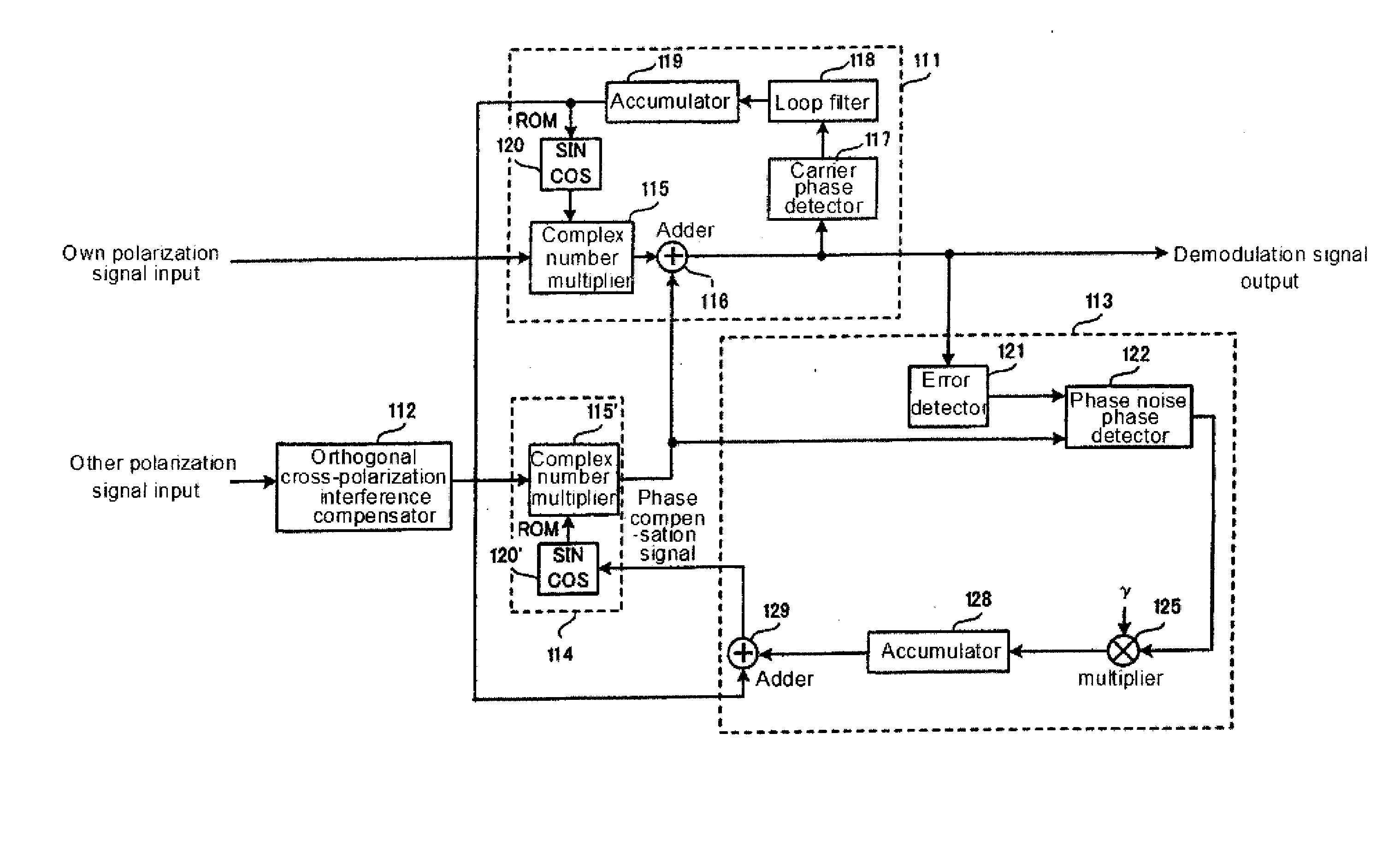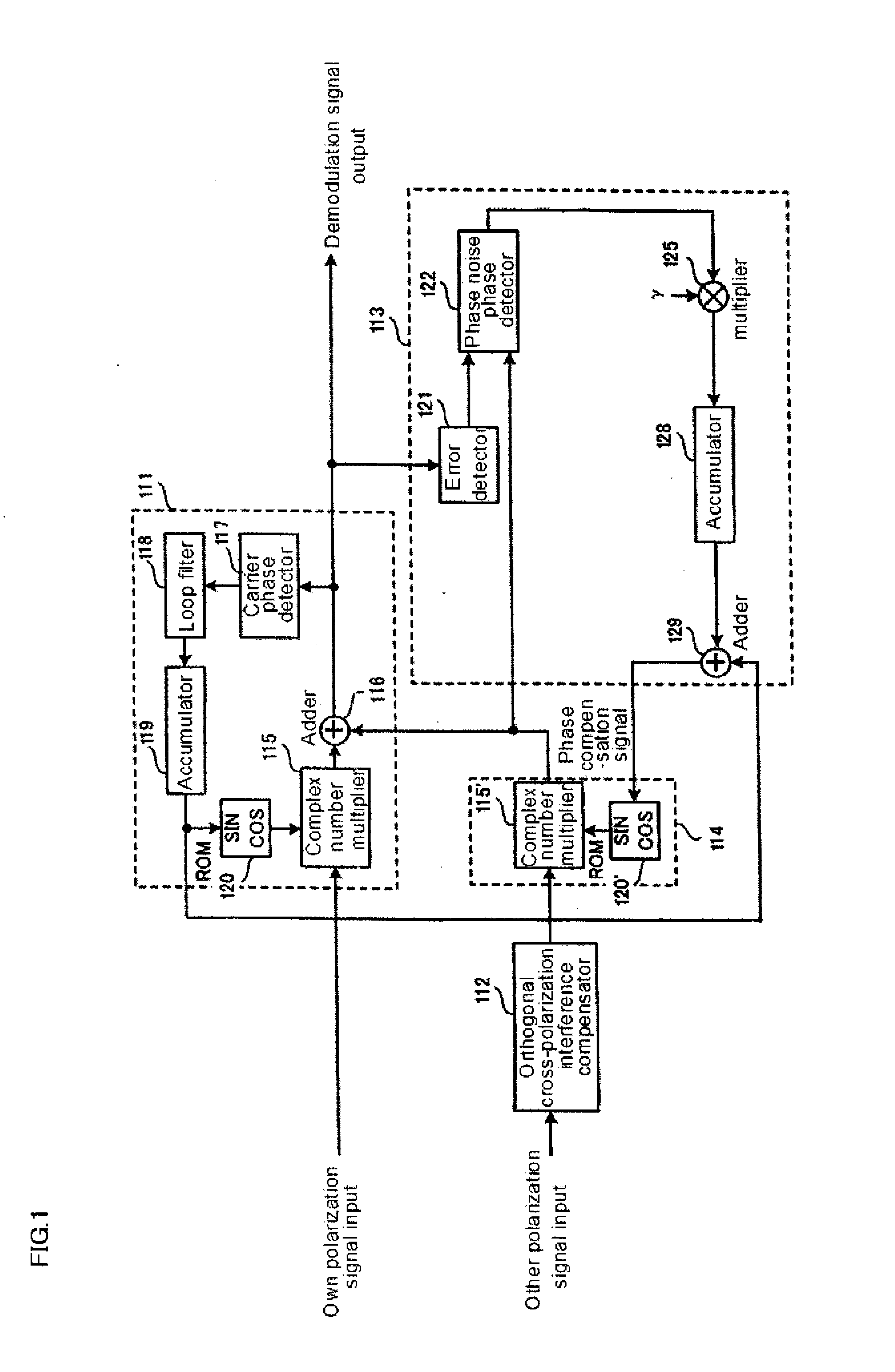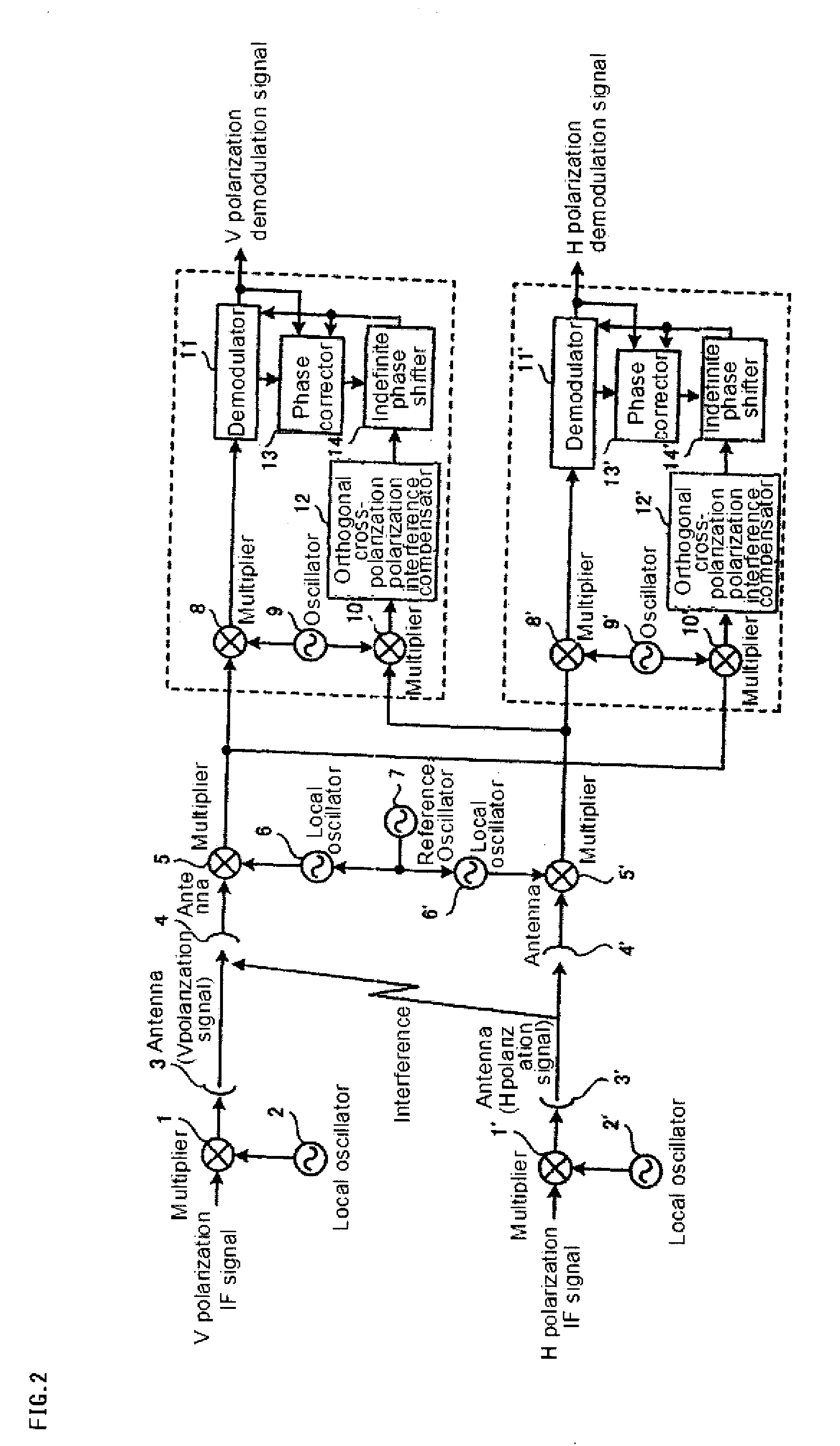Orthogonal cross polarization interference compensating device, demodulator, receiving station, and method of compensating cross-polarization interference
a cross-polarization interference and compensating device technology, applied in the direction of polarization/directional diversity, diversity/multi-antenna system, digital transmission, etc., can solve the problem of disadvantageous local division in terms of communication path reliability
- Summary
- Abstract
- Description
- Claims
- Application Information
AI Technical Summary
Benefits of technology
Problems solved by technology
Method used
Image
Examples
first exemplary embodiment
[0029]FIG. 2 is an illustration of co-channel transmission in accordance with a first exemplary embodiment of the invention, and FIG. 3 is a block diagram illustrating the configuration of an orthogonal cross-polarization interference compensating device in accordance with the first exemplary embodiment of the invention. Referring to FIG. 3, the orthogonal cross-polarization interference compensating device includes demodulator 11, orthogonal cross-polarization interference compensator 12, phase corrector 13, and infinite phase shifter 14.
[0030]The orthogonal cross-polarization interference compensating device of this exemplary embodiment will be described more fully hereinafter.
[0031]Orthogonal cross-polarization interference compensator 12 generates a compensation signal for compensating for phase noise included in an own polarization signal (i.e., an own polarization input). Demodulator 11 compensates an orthogonal cross-polarization interference of other polarization signals for...
second exemplary embodiment
[0097]In accordance with this exemplary embodiment, integration circuit 26 reduces a gain of its output when a small amount of orthogonal cross-polarization interference is present. FIG. 8 is a block diagram illustrating the configuration of orthogonal cross-polarization interference compensating device in accordance with this exemplary embodiment.
[0098]Referring to FIG. 8, orthogonal cross-polarization interference compensating device further includes multiplier 37 in addition to the configuration shown in FIG. 3. In addition, orthogonal cross-polarization interference compensating device includes control circuit 36 in place of control circuit 23.
[0099]Control circuit 36 determines whether or not orthogonal cross-polarization interference is present based on a compensation signal adjusted by infinite phase shifter 14, and if no orthogonal cross-polarization interference is present, reduces an integration signal output from integration circuit 26 to a predetermined value.
[0100]FIG. ...
third exemplary embodiment
[0107]In accordance with this exemplary embodiment, the value of an integration signal output from integration circuit 26 is reset if a small amount of orthogonal cross-polarization interference is present. The configuration of the orthogonal cross-polarization interference compensating device is substantially the same as that shown in FIG. 2 except for the internal configuration of integration circuit 26.
[0108]FIG. 10 is a block diagram illustrating the configuration of integrating circuit 26 in accordance with the second exemplary embodiment of the invention. Referring to FIG. 10, integration circuit 26 includes adder 30 and flip-flop 31.
[0109]Control circuit 23 clears the value of the integration signal by clearing a value maintained by flip-flop 31 to a predetermined value if no orthogonal cross-polarization interference is present. Meanwhile, control circuit 23 can use a converging signal, which indicates a converging operation previously described in the first exemplary embodi...
PUM
 Login to View More
Login to View More Abstract
Description
Claims
Application Information
 Login to View More
Login to View More - R&D
- Intellectual Property
- Life Sciences
- Materials
- Tech Scout
- Unparalleled Data Quality
- Higher Quality Content
- 60% Fewer Hallucinations
Browse by: Latest US Patents, China's latest patents, Technical Efficacy Thesaurus, Application Domain, Technology Topic, Popular Technical Reports.
© 2025 PatSnap. All rights reserved.Legal|Privacy policy|Modern Slavery Act Transparency Statement|Sitemap|About US| Contact US: help@patsnap.com



